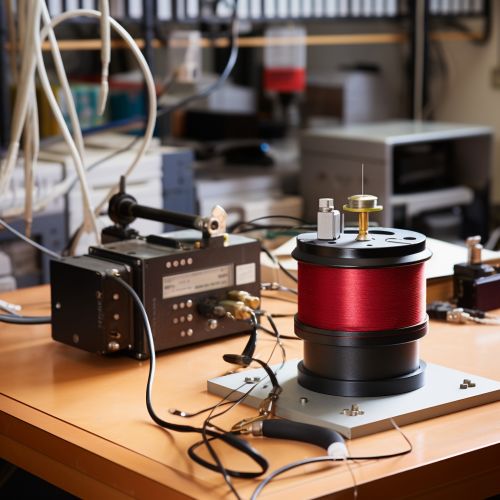Body wave
Introduction
A body wave is a type of seismic wave that moves through the interior, or 'body', of a planet. These waves are generated by seismic events such as earthquakes, volcanic eruptions, or other explosive occurrences, and are one of the primary means by which scientists study the internal structure of the Earth.
Types of Body Waves
There are two main types of body waves: P-waves (Primary waves) and S-waves (Secondary waves).
P-Waves
P-waves, or primary waves, are the fastest type of body wave, and thus the first to be detected by seismographs. They are longitudinal waves, meaning they cause particles in the medium to move in the same direction as the wave itself. This results in alternating compressions and rarefactions in the material through which the wave is traveling.
S-Waves
S-waves, or secondary waves, are slower than P-waves and arrive at seismographs second. They are transverse waves, causing particles to move perpendicular to the direction of wave propagation. This results in a shearing motion within the material. S-waves can only travel through solids, not liquids or gases, a fact which has been crucial in the study of the Earth's interior.
Generation of Body Waves
Body waves are generated by seismic events, such as earthquakes or volcanic eruptions. The release of energy during these events creates waves that travel through the Earth's interior. The characteristics of these waves - their speed, direction, and the way they interact with different materials - provide valuable information about the Earth's internal structure.
Detection and Measurement of Body Waves
Body waves are detected and measured using seismometers. These instruments record the arrival times and amplitudes of P-waves and S-waves, allowing scientists to calculate the distance to the seismic event that generated the waves. By comparing data from multiple seismometers, it is possible to triangulate the location of the event.


Use in Studying the Earth's Interior
The study of body waves is a key component of seismology, the scientific study of earthquakes and the propagation of elastic waves through the Earth. By analyzing the behavior of body waves, seismologists can infer details about the Earth's internal structure. For example, the fact that S-waves do not pass through the Earth's outer core suggests that it is in a liquid state.
